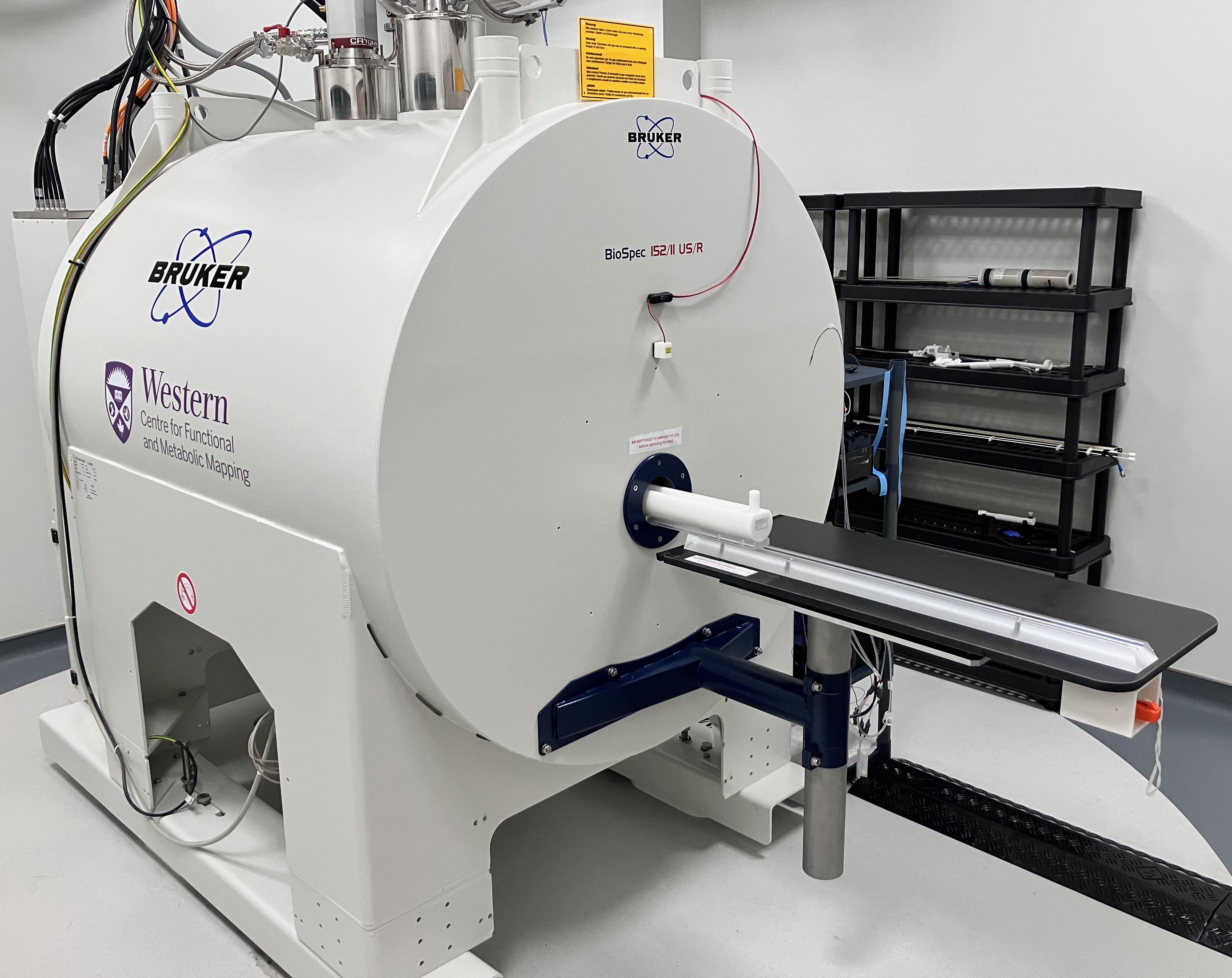15.2T MRI

In December of 2023 the CFMM took delivery of a state-of-the-art Bruker Neo 15.2T MRI system, optimized for small animal research focused primarily on understanding brain structure-function relationships in humanized mouse models of neurological disease. The first of its kind in Canada and one of only 6 in the world, this platform produces images with unprecedented spatial resolution and unique image contrasts available, and will help advance our understanding of neurological processes and disorders and assess new therapeutics. New areas of focus will be in studying the important role of the immune system in neurological disorders and developing new forms of molecular MRI.The addition of the 15.2T adds to the already impressive complement of MRI systems at the Western Centre for Functional and Metabolic Mapping (CFMM), further cementing the CFMM as “Canada’s Ultra-High Field MRI Platform”, and one of only a few institutions worldwide with the capability to have such a transformative impact on research endeavors across various disciplines, a wide range of species and lifespan. More specifically, the addition of this platform will impact:
- Cutting-Edge Neuroscience Research: The ability to link structure and function at 10 of microns spatial resolution is essential to studying mouse brain function and relating it to human brain function. The resolution that can be obtained with the 15.2T allows for the merging of the MRI data with other state of the art cellular and molecular imaging techniques such as electrophysiology and fibre photometry, as well as a revolutionary new light sheet microscope that was recently purchased.
- Advanced Disease Studies: Researchers will have a powerful tool to investigate the impact of diseases on the brain at a molecular and cellular level using structural, functional and biochemical information available from this 15.2T MRI system. This could lead to breakthroughs in understanding the mechanisms behind neurological disorders, potentially paving the way for innovative diagnostic and therapeutic approaches.
- Enhanced Collaboration: The availability and new capabilities of such a sophisticated research tool is expected to foster collaboration among researchers from different departments and institutions. The design of new molecular imaging probes will involve researchers in Science, Engineering and Schulich. The use of the 15.2T for neuroimmune studies will involve the new Canada Excellence Research Chair in the area of neuroinflammatory diseases.
- Training and Education: The presence of a state-of-the-art MRI system provides a unique opportunity for students and trainees to gain hands-on experience with cutting-edge technology.
The Bruker Neo console operates with Paravision-360, and is equipped with 2 transmit and 4 receive channels. A high performance Resonance Research 6 cm gradient coil (ID) coupled with an IECO gradient amp produces peak fields of 1200 mT/m and SR10000. A large suite of RF coils designed and manufactured in house are available for a variety of applications and animals models, including awake behaving studies involving mice.
Animals are consistently monitored during preparation, MRI scanning and recovery. dStandard physiologic monitoring includes : respiration rate, heart rate, oxygen saturation and temperature via a controlled feedback warming system.
Anesthetic delivery via Precision Isoflurane Vaporizor-both 100% oxygen and medical air available.
Optional injectable anesthetic regimes available upon request
Physiological monitoring provided by SA Instruments, Inc. Model 1025
-Heart rate
-Oxygen saturation (SPO2)
-Respiration rate (via pneumatic pillow)
-Temperature (maintained via warm air blower)
-ECG available
-Respiratory and cardiac gating available
Supplemental equipment:
-Warm water circulating blanket Stryker T-Pump Model TP700
-Custom built MRI compatible heating blanket
-MRI compatible syringe pumps (x2) Harvard Apparatus PHD200
-Powerlab 4/20 for trigger outputs
-Master 8 pulse simulator
-Separate surgical suite available upon request
Task-fMRI Devices:
1. Electrical Stimulation
2. Master-8, the programmable stimulator , is an eight channel general purpose stimulator for nerve and muscle stimulation procedures: 8 independent channels, with repetitive, single, and train outputs. Synchronized to produce complex patterns of pulses. Use some channels to stimulate your preparation, while using other channels to trigger other instruments (oscilloscope, PC, etc.) in synchronization with the stimulation.
3. ISO-Flex, the flexible stimulus isolator, used together with Master-8, with current or voltage modes, bipolar pulses and adjustable amplitudes.





